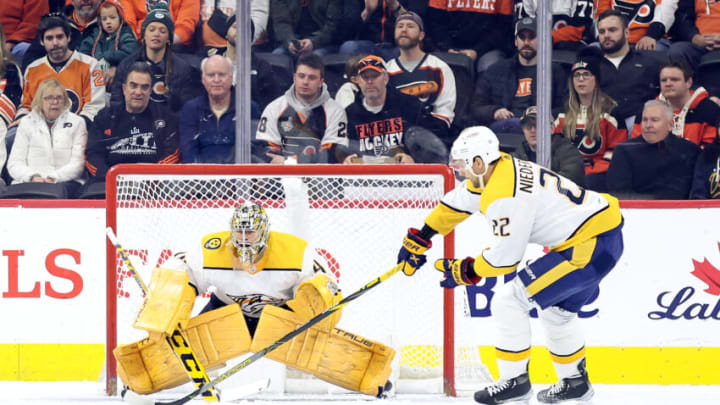On February 25, 2023, The Winnipeg Jets acquired Nino Niederreiter from the Nashville Predators. By all accounts, this was a very solid addition based on Nino’s advanced metric portfolio, historical production, and general fit with the Winnipeg Jets.
My interest however lies with what the Winnipeg Jets gave up for Nino – a 2024 2nd-round pick. Every year around draft season, fans and experts alike salivate at the prospect of adding talent to their roster in the most cost-effective manner possible – the NHL Draft. Draft picks are like currency, yet their true value remains largely relative, and often subjective.
Advocates of hoarding draft picks espouse a draft-and-develop method – similar to what the Jets profess to utilize. Conversely, others see draft picks as a means to an end, with the end being acquiring proven NHL talent.
But what it the true value of an NHL draft pick, especially those in the later rounds? For every Brett Hull (6th round), Doug Gilmore (7th round) or Pavel Datsyuk (6th round) there are hundreds of players selected that never lace ‘em up for a professional franchise. Where does the value go?
(Please note that evaluations here are based on NHL success. I understand the utility of draft picks to feed and sustain an organization’s AHL, WHL or equivalent feeder teams.)
Let’s start simple. What percentage of players drafted make it to the NHL? On average 49% of players who are drafted by an NHL team will make it to the NHL, which means that they play at least one game at the NHL level. That number was higher than I had anticipated, but not meaningful, relative to the success of an NHL franchise.
From a macro view, an average draft class produces about 60 NHL players, and about 40 of them will go on to play a significant career in the NHL (at least 300 games played). This is out of draft classes of around 225 players (depending on the year). So, that is about an 18% hit rate across all rounds given the parameters above. Not great, Bob.
Obviously, ‘hit rates’ depend largely on the round selected.
What value does a 1st round pick hold for the Winnipeg Jets?
As early as the No. 6 overall pick, there’s at least a one-in-three chance of a drafted player being no more than a fourth-liner or fringe NHLer. By the last picks of the first round (28-30), it’s at least a three-in-four chance that the pick will be a fourth-liner or fringe player. In essence then, outside of the 1st round of an NHL draft, the odds of selecting a difference-maker in your NHL lineup are relatively slim.
First-round picks are another story, but again, even within the round itself – diminishing returns as you move outside of the top 15. Scheifele, Ehlers, Connor, and Morrissey were all selected at or near the front half of the first round. Kudos to the Jets organization. Kyle Connor selected 17th, is the latest selection of this crew, but we can thank an epically terrible Bruins draft for the gift that is KFC.
To the Jets’ credit, they have also had some success drafting outside the 1st round. Connor Hellebuyck is a beacon of late-round success, yet goaltenders are somewhat the exception to the rule. Most teams don’t use early-round capital on the position. Adam Lowry, Andrew Copp, Dylan Samberg and Mason Appleton would all be considered later-round draft successes, however, not an All-Star game amongst them. Lowry is the best-case scenario and has had a tremendous Winnipeg Jet career, yet he is the best of 13 years of drafting.
The metrics are different because of the smaller roster sizes, but the NBA has figured out the true value of a non-lottery draft pick. At this year’s trade deadline, 37 second-round picks changed hands – nearly double the record amount. GMs were clearly indicating through their actions that 2nd round picks were not to be coveted.
Adding Niederreiter was a good start, but the Jets have plenty of work to do, and depth to add. They shouldn’t throw around draft picks like Tic Tacs at a halitosis support group, but their limited window for true success, and the relative value of draft picks, should signal a green light – go.
